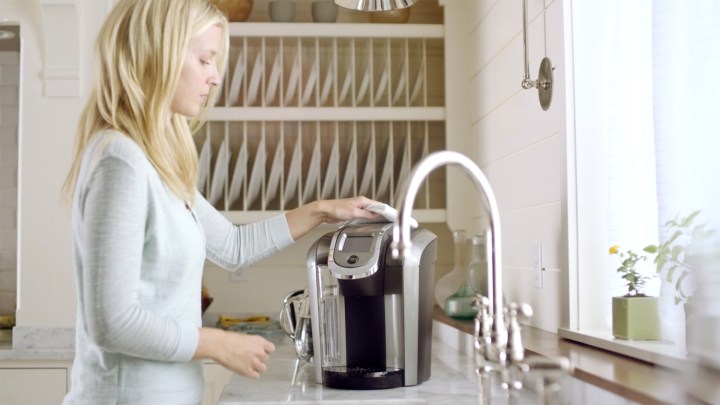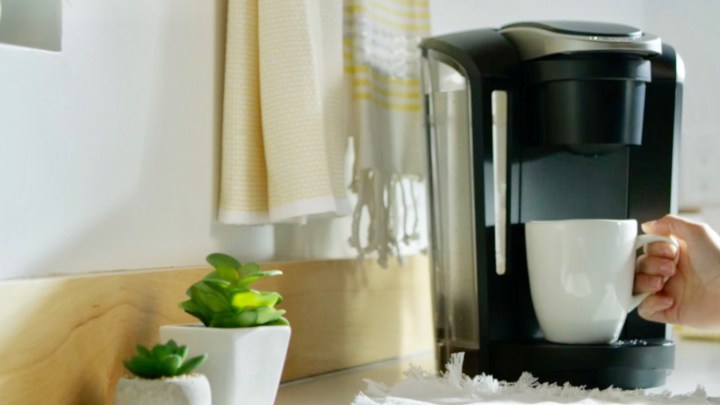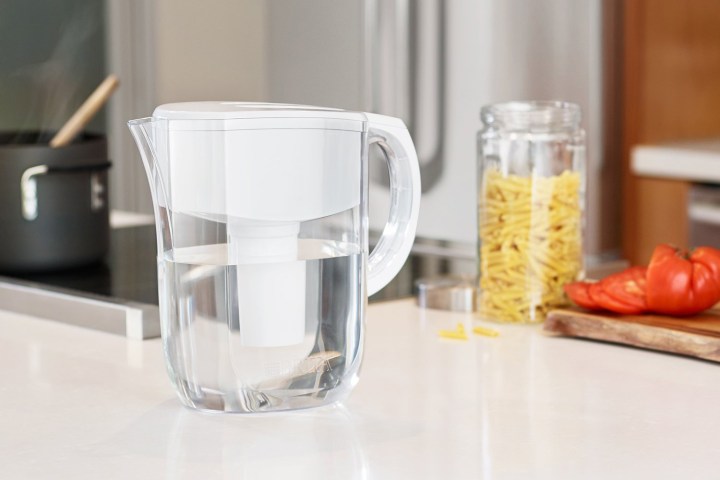When your Keurig boils water, the water steams up into a gas, but hard minerals remain as scale. This is the same whether you're using a Keurig Slim, Keurig 2.0, or any of the best Keurig machines. Scale is simply a part of machines that boil water.
While scale is usually quite harmless, the excess buildup of it will eventually make your Keurig not function. Like cholesterol in the veins, it can eventually clog your machine up. While you could theoretically keep checking out Keurig deals each time you get a scale issue, that isn't practical. Read along for our step-by-step instructions on how to descale a Keurig.
You should descale your Keurig every three months, and it takes about one hour to properly descale the machine.
Note: This is about descaling specifically. If you want to give a dirty Keurig a thorough cleaning, check out our guide on how to clean the coffee machine as well.

Prepare your Keurig for descaling
Before we start, this is a good time to give some of your Keurig’s brewing components a quick soap wash. Try to dedicate at least an hour to this preliminary step. Unplug the maker, then remove the lid, mug tray, and K-Cup holder. Scrub the tray and holder with warm soapy water, then rinse and dry. Wipe down the lid and body of your Keurig with a damp soapy cloth, and give these pieces some time to air dry.
Once all components have dried, reassemble. Now, you can start the descaling process.
Step 1: Make sure to empty your machine, and then clear out a nearby sink to create plenty of room. Pour whatever water is left in the water reservoir down the drain, and make sure there are no K-cups left inside the brewer.
Step 2: Find a large mug to use for draining, and make sure no one is going to need their coffee fix for the next few hours.

How to descale your Keurig with vinegar
You'll need an acid to break up the scale in your Keurig machine. For this, we recommend white vinegar. White vinegar is cheap, readily available, and works great on scale. You’ll need at least several cups for a good cleansing, which means you may need to buy some specifically for this project. Also, it is vinegar, which means your kitchen or break room may reek of that vinegar smell for a bit.
You can also buy Keurig's descaling solution and follow the on-bottle instructions. This, however, is expensive and should not work significantly better than the vinegar solution below.
Step 1: Fill the reservoir with half vinegar and half water -- possibly even more vinegar than water for a really tough descaling job.
Step 2: Set your Keurig for a normal, full cup of coffee — you can go larger if you have a thermos nearby, but a mug typically works best. Make sure there’s no K-Cup inside. Run the descaling solution through the machine and wait for the cup to fill.
Step 3: Continue filling cup after cup and pouring them down the drain. If you used the white vinegar solution, the room is really going to start smelling like vinegar, but hang in there and keep going until the reservoir is empty.
Step 4: When complete, the water should be pouring more smoothly and filling up cups a bit more easily. If you don’t notice any improvement at all, you may want to fill the reservoir with more solution and repeat the whole process.

Flush the Keurig with fresh water
Let your Keurig sit still (while still turned on) for about 30 minutes to allow the acid to dissolve the scale left inside the brewer fully. Then you're ready to move on to the last step.
Step 1: Thoroughly clean and wipe down the reservoir so that you remove all the vinegar and solution. When you’re finished, fill the reservoir with clean water to start completely flushing out the descaling solution.
Step 2: Program the Keurig to make a full cup, run several water cups through the brewer again, and discard each of these. If your Keurig has a carafe setting, select it to maintain a steady flow of water.
Step 3: Refill the reservoir when it’s empty and go through the process again. You’ll want to refill the reservoir at least two times with water to clean out your Keurig thoroughly. Before you start, make sure you have something to catch and discard the water.

Step 4: When you’ve finished, taste-test the water to see if you can detect any traces of descaler. You can’t flush out your machine too much, so if you don’t think it’s clean enough, run through the process as many times as necessary.
If you read your Keurig instruction manual, you’ll notice that it recommends always using filtered or bottled water, which is important to avoid buildup caused by minerals and contaminants found in tap water. Regularly buying bottled water can get expensive (and is terrible for the environment), so it might make sense to purchase a filtered water jug specifically for your Keurig machine. Using filtered water will lengthen your Keurig’s life span. The filter expense is worth the investment because it will save you time and money in the long run.
Editors' Recommendations
- How to remove an account from Google Smart Lock
- How to use the Google Home app on a computer
- How to connect Alexa to your TV for smart voice control
- How to Drop In on an Echo, Echo Show, or Echo Dot
- Roomba not connecting to Wi-Fi? Here’s how to fix it




